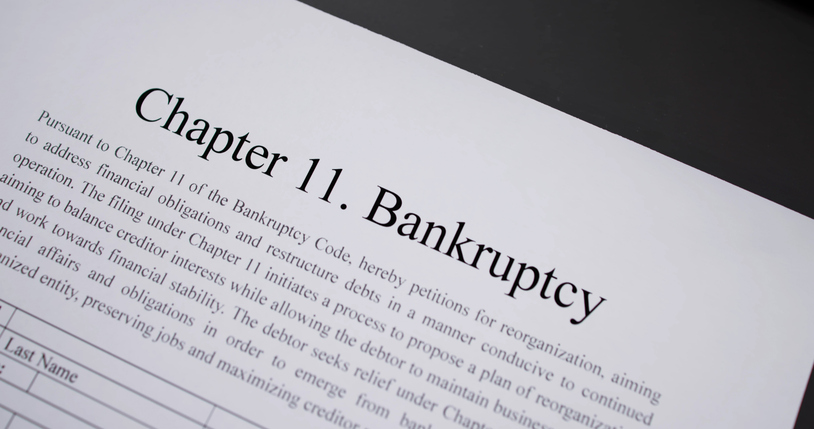How to Capitalize on Commercial Real Estate Opportunities After Retail Bankruptcies
The commercial real estate world has experienced ample post-pandemic challenges, and this has never been more evident than with the rise in retailers filing for bankruptcy. Lately larger brands, especially retailers, are restructuring, downscaling, or filing for Chapter 11. For example, Big Lots plans to close more than 300 stores in the midst of its restructuring, and last year 99 Cents Only filed for Chapter 11, closing all 371 of the company’s stores.
Well-known retailers, like Bed, Bath, and Beyond and Rite Aid, are also in the process of closing their stores, leaving vacant spaces that are ripe for commercial real estate opportunities — opportunities that you should take advantage of. Here, we’ll dive into some real-world examples of retail bankruptcies and their effect on commercial real estate, and then show how you can leverage these opportunities to maximize the value of your next project.
The Impact of Bankruptcies on CRE
First, let’s take a closer look at the specifics of how retail bankruptcies impact commercial real estate. Obviously, when filing for Chapter 11, many retailers end up closing their stores and selling off their goods, leading to a large amount of real estate vacancies, especially for those larger stores that utilize a lot of resources and cost more in utilities due to a bigger floorplan. This can actually lead to a negative domino effect on surrounding retail stores, as foot traffic decreases at these larger retailers. This demonstrates that — surprisingly — retail bankruptcies can impact more than just the brand directly affected.
There may also be challenges in attracting new tenants, especially if location played a factor in the previous retailer closing, so landlords may need to resort to lowering leases if they’re struggling to find new stores to move in. And yet, in other places where the location is prime, leases might be raised in order to increase competition. It all depends on the specific situation.
For instance, when Bed, Bath, and Beyond filed for Chapter 11 in 2023, it ended up closing 360 of its namesake stores, along with 120 Buy Buy Baby stores. Other retailers flocked to take advantage of this commercial real estate opportunity. Burlington actually took over 50 of its locations for $13.53 million, while other retailers, like Macy’s and Michael’s, took on additional leases.
Burlington, in particular, has extensive experience dealing with retail bankruptcies. As CEO Michael O’Sullivan said, “Many of our most successful and productive stores today were once upon a time Circuit City, Toys R Us, Sports Authority, Linens ‘N Things.” Retail bankruptcies have opened the doors to new commercial real estate opportunities to companies like Burlington.
Seize the Day with the Right Investment Management Tool
If you’re a GP looking to take advantage of rising vacancies due to retail bankruptcies, you need to leverage the right tools to help you manage sales, tenants, and other important commercial real estate details. Find a CRE investment management tool that will do all the hard work for you so you can focus on the growth of your business — and potential opportunity.
A key consideration should be an effective and secure investor portal that can help facilitate transactions while putting your investors at ease — and easing your workload. Access secure documents, sift through transaction histories, review portfolio performance, and more with a comprehensive investor portal that ensures you and your LPs stay in communication throughout a deal.
Perhaps even more essential is making sure your CRE tool has an integrated banking platform in order to more easily and effectively manage transactions between you and your investors. Such a tool will enable you to move money instantly, while also staying organized and secure. Even better — find a CRE tool that is able to earn a high-yield APY so that your committed capital can earn interest while waiting to be called.
Another important consideration for your CRE tool is its ability to facilitate distribution payments easily and efficiently. Distribution payments can be complex and hard to figure out manually. They are undoubtedly one of the most arduous — but necessary — tasks a GP has to implement periodically during a project. Remove human error and save valuable time with a CRE tool that can handle these complex distribution payments for you.
Leverage Commercial Real Estate Opportunities with Covercy
It’s clear that many retailers are struggling to find footing in a post-pandemic world. It’s imperative that you take advantage of the many real estate opportunities that will become available once these retailers declare bankruptcy. Companies like Burlington have a history of seizing commercial real estate opportunities. With the closure of over 700 Toys R Us Stores in 2018, Burlington took over its stores in markets like California and New Jersey, as well as over 30 Sports Authority locations when it filed for Chapter 11. The opportunities are there — but you need to be prepared to leverage them to your advantage.
That’s where Covercy can help. A revolutionary real estate syndication platform, Covercy is where banking meets investment management. Along with its comprehensive investor portal and integrated banking platform, Covercy has intuitive capital raising software, secure document sharing, expert reporting software, and much more. Covercy can help you streamline your operations so that you’re ready for your next real estate opportunity.
Take a look at how our innovative platform can help with your next transaction. Book a demo with Covercy today.






